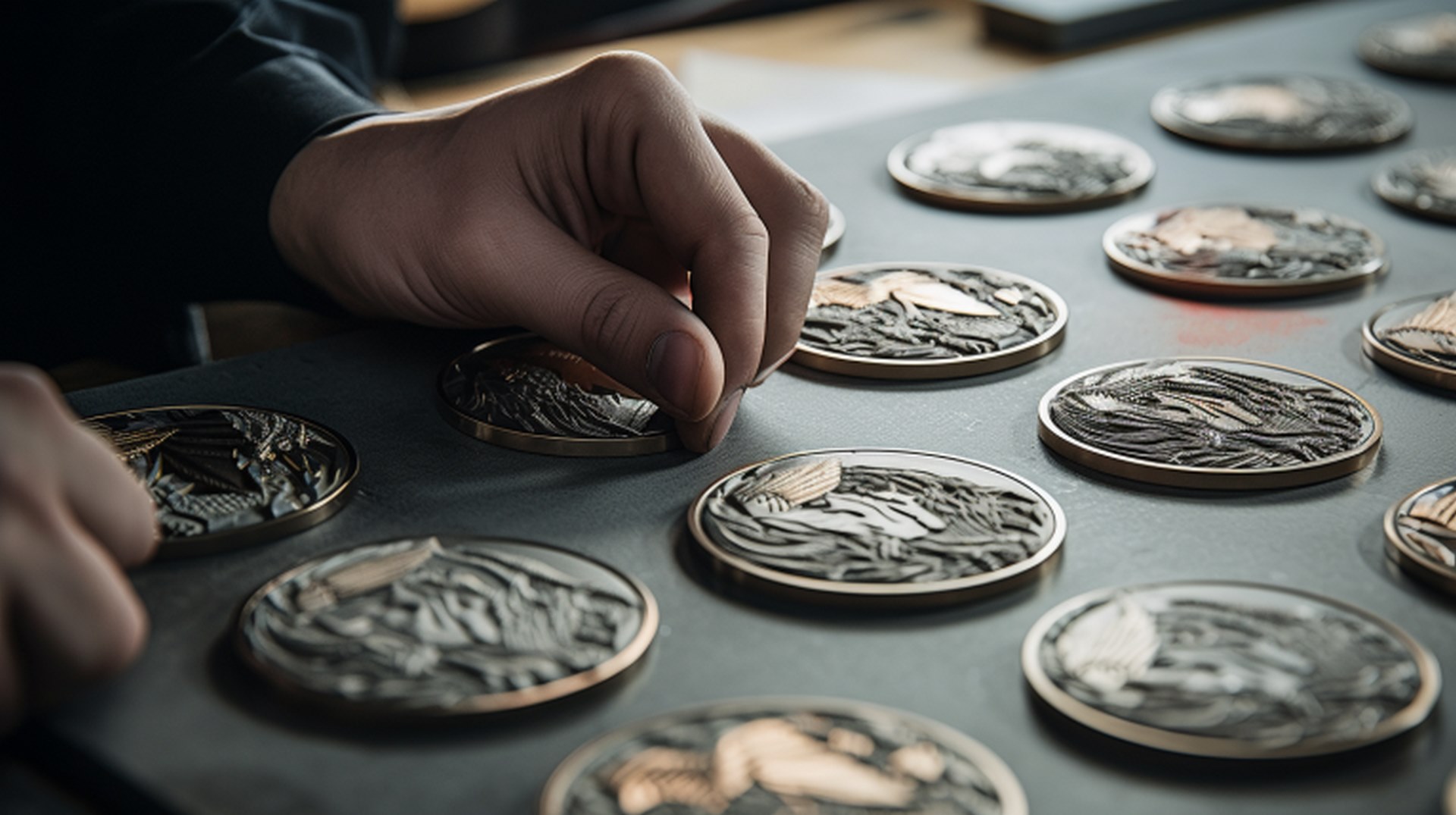Are you tired of settling for generic badges that lack personality? Well, fret no more! In this article, we will guide you through the fascinating process of getting metal badges custom made just for you.
From designing to production and finishing touches, you'll gain a deeper understanding of how these stylish accessories come to life.
So, put on your creative hat and let's dive into the world of personalized metal badges!
Key Takeaways
- Designing the badge involves considering the size, shape, and color options, as well as the purpose and display location of the badge.
- Material selection is important, with options such as brass, stainless steel, zinc alloy, and pewter offering different qualities and appearances.
- The production and manufacturing process includes creating a mold, pouring molten metal, inspecting for imperfections, cleaning, and polishing the badges.
- Finishing and polishing involve sanding, buffing, cleaning, and applying a protective coating to achieve a sleek and professional look for the badge.
- Quality control and packaging are crucial steps, including inspecting for imperfections, conducting durability tests, and carefully packaging each badge for delivery.

To design your badge, you'll need to consider the size, shape, and color options.
The first thing you should decide is the size of your badge. Think about what purpose it will serve and where it will be displayed. If it's going on a uniform or a bag, you might want a smaller size that doesn't get in the way.
Next, think about the shape of your badge. Do you want a classic round or oval shape? Or maybe something more unique like a star or a shield? The choice is yours!
After deciding on the size and shape, it's time to choose the colors for your badge. Consider your organization's branding and what message you want to convey. Bright colors can make your badge stand out, while muted tones can give it a more professional look.
Now that you've designed the perfect size, shape, and color combination for your badge, let's move on to material selection...

When choosing materials for your custom badge, consider factors such as durability and visual appeal. You want a badge that not only looks good but also stands the test of time. Here are four key material options to consider:
Brass
This metal is known for its durability and classic appearance. It can be polished to a high shine or given an antique finish for a vintage look.
Stainless Steel
If you're looking for a sleek and modern badge, stainless steel is a great choice. It's resistant to tarnish and corrosion, making it ideal for badges that will be exposed to the elements.
Zinc Alloy
This versatile material allows for intricate designs and fine details. It can be plated with various metals like gold or silver for added visual appeal.
Pewter
Known for its softness and malleability, pewter badges offer a unique texture and feel. They can be finished with an antiqued patina or left in their natural state.

During production and manufacturing, you'll need to consider factors such as cost, timeline, and quality control to ensure your badge is created with precision and meets your expectations.
To start the process, a mold of your badge design will be created using advanced technology. This mold will serve as the foundation for producing multiple badges efficiently. Once the mold is ready, molten metal will be poured into it and left to cool down. After cooling, the badges are carefully removed from the mold and inspected for any imperfections or inconsistencies in shape.
Next comes the cleaning phase where excess metal or debris is removed from the badges. They are then polished to achieve a smooth and shiny surface. The polishing process not only enhances their appearance but also ensures that no sharp edges remain which could potentially harm someone.
Finishing and polishing play a crucial role in giving your badge its final look. It's important to make sure that every detail is taken care of during this step. From selecting the right type of polish to determining how much shine you want on your badge ?all these decisions contribute towards creating a high-quality product.
Now that you understand how production and manufacturing work, let's move on to discussing how finishing and polishing add those final touches that make your badge stand out even more.
In order to achieve a sleek and professional look for your badge, make sure you pay attention to the finishing and polishing stage. This is where your badge will truly shine. Here are four important steps to consider during this crucial phase:
Sanding
Start by sanding the surface of your badge to remove any imperfections or rough edges. Use fine-grit sandpaper in circular motions to create a smooth and even finish.
Buffing
Next, use a buffing wheel or cloth along with a polishing compound to bring out the shine in your badge. Apply gentle pressure and move the wheel or cloth back and forth until you achieve the desired luster.
Cleaning
After buffing, it's essential to thoroughly clean your badge using mild soap and water. This will remove any residue from the polishing compound and ensure that your badge looks pristine.
Protective Coating
Finally, apply a protective coating such as clear lacquer or enamel to seal in the shine and protect your badge from tarnishing over time.
By following these steps, you can ensure that your custom-made metal badge looks professional and stands out from the crowd.
Now let's move on to quality control and packaging, where we'll ensure that every detail is perfect before delivering your badges to you.

To ensure the highest level of quality, carefully inspect each badge and package them with attention to detail. After the badges have been finished and polished, it is crucial to perform a thorough quality control check to guarantee that every badge meets the required standards.
Begin by examining the metal surface for any imperfections such as scratches or dents. Use a magnifying glass if necessary to detect even the smallest flaws. Check that all elements of the design are crisp and clear, ensuring that no details are blurred or distorted.
Next, evaluate the durability of each badge by subjecting them to various stress tests. This includes checking their resistance to bending, scratching, and fading. Ensure that they maintain their shape and shine even after prolonged use.
Once the badges pass these quality control checks, it is time to package them carefully. Utilize protective materials such as foam or bubble wrap to prevent any damage during transportation. Place each badge in an individual plastic bag or protective sleeve before placing them in a sturdy box.
Lastly, label each package appropriately with relevant information such as order numbers or customer names. Double-check that all packages are securely sealed before sending them out for delivery.
From the inception of designing to the meticulous selection of materials, every step is carefully crafted with passion and precision.
As each badge undergoes production, manufacturing, finishing, and polishing processes, it transforms into a shimmering work of art that captures attention like a shooting star in the night sky.
Quality control ensures perfection before these magnificent creations are lovingly packaged, ready to shine proudly on your chest.
So, embrace the magic and wear your custom-made badge with pride!
With 17-year experience of crafting custom metal and non-metal logos&badges, we Goldhot serve diverse industries worldwide.

